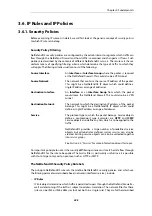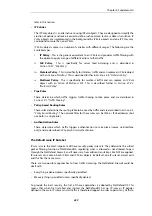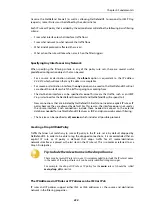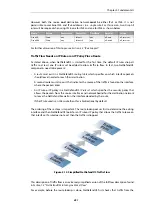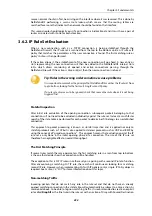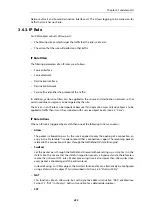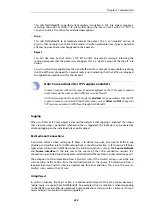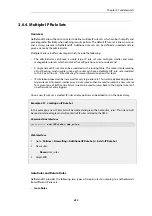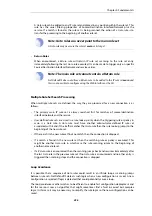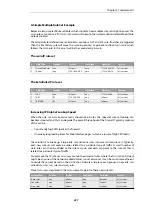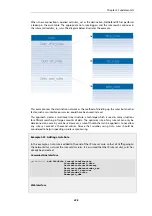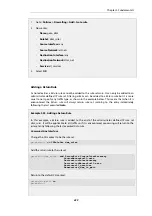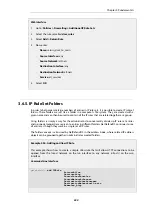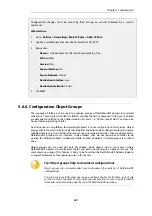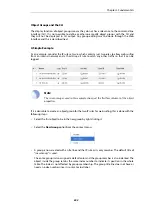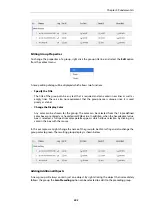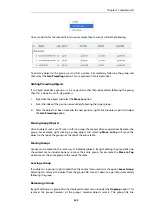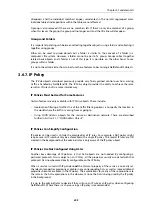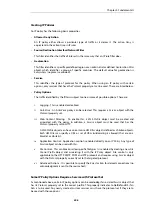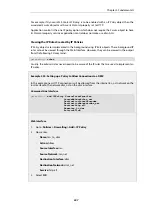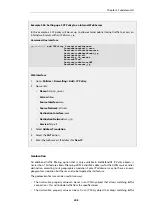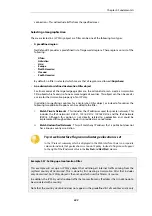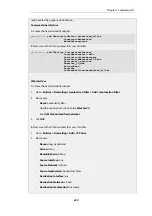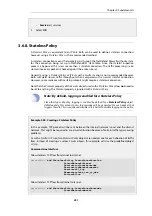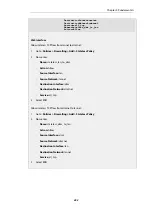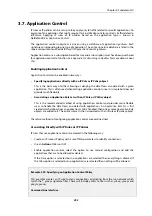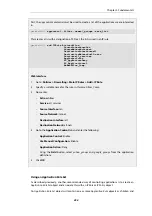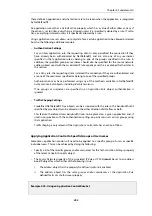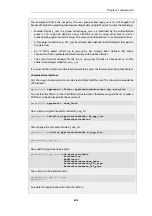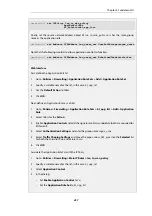
Object Groups and the CLI
The display function of object groups means they do not have relevance to the command line
interface (CLI). It is not possible to define or otherwise modify object groups with the CLI and
they will not be displayed in CLI output. Any group editing must be done through the Web
Interface and this is described next.
A Simple Example
As an example, consider the IP rule set
main
which contains just two rules to allow web surfing
from an internal network and a third
Drop-all
rule to catch any other traffic so that it can be
logged:
Note
The screen images used in this example show just the first few columns of the object
properties.
If it is desirable to create an object group for the two IP rules for web surfing, this is done with the
following steps:
•
Select the first object to be in the new group by right clicking it.
•
Select the New Group option from the context menu.
•
A group is now created with a title line and the IP rule as its only member. The default title of
"
(new Group)
" is used.
The entire group is also assigned a default color and the group member is also indented. The
object inside the group retains the same index number to indicate its position in the whole
table. The index is not affected by group membership. The group title line does not have or
need an index number since it is only a textual label.
Chapter 3: Fundamentals
242
Summary of Contents for NetDefendOS
Page 30: ...Figure 1 3 Packet Flow Schematic Part III Chapter 1 NetDefendOS Overview 30 ...
Page 32: ...Chapter 1 NetDefendOS Overview 32 ...
Page 144: ...Chapter 2 Management and Maintenance 144 ...
Page 284: ...Chapter 3 Fundamentals 284 ...
Page 392: ...Chapter 4 Routing 392 ...
Page 419: ... Host 2001 DB8 1 MAC 00 90 12 13 14 15 5 Click OK Chapter 5 DHCP Services 419 ...
Page 420: ...Chapter 5 DHCP Services 420 ...
Page 573: ...Chapter 6 Security Mechanisms 573 ...
Page 607: ...Chapter 7 Address Translation 607 ...
Page 666: ...Chapter 8 User Authentication 666 ...
Page 775: ...Chapter 9 VPN 775 ...
Page 819: ...Chapter 10 Traffic Management 819 ...
Page 842: ...Chapter 11 High Availability 842 ...
Page 866: ...Default Enabled Chapter 13 Advanced Settings 866 ...
Page 879: ...Chapter 13 Advanced Settings 879 ...

